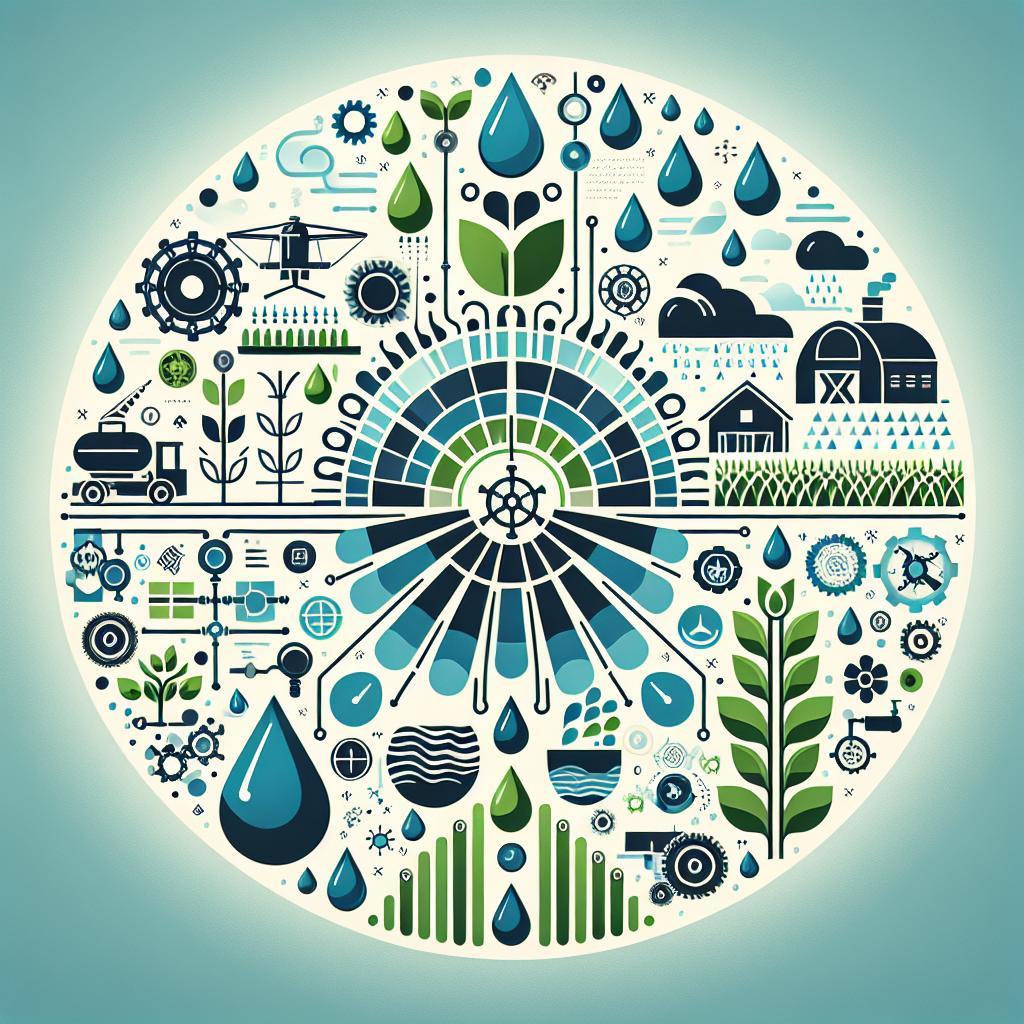This post may contain affiliate links which means I may receive a commission for purchases made through links. Learn more on my Private Policy page.
How to Design an Efficient farm Irrigation Plan: A Green Thumb’s Guide to Quenching Your Crops’ Thirst
Welcome to the world of sustainable farming, where every drop counts and your crops thrive with just the right amount of water! If you’ve ever gazed at your fields, dreaming of bountiful harvests while wrestling with the complexities of irrigation systems, you’re in for a treat. Designing an efficient farm irrigation plan isn’t just a task—it’s an art that blends science with nature’s rhythms. Picture this: lush green rows of vegetables, shimmering under the sun, their roots stretched out, happily sipping moisture from the ground. with the right techniques and strategies, you can turn that vision into reality.
In this friendly guide,we’ll explore the essential steps to create an irrigation plan that nurtures not only your crops but also our precious water resources. Weather you’re a seasoned farmer or just starting out, we’ll share tips, tricks, and best practices that will leave your fields flourishing and your wallet happy. So grab your sunhat and let’s dig into the essentials of smart irrigation design, ensuring your farm remains a beacon of green success!
Understanding Your Water Needs for Optimal Growth
To ensure your crops flourish, it’s essential to assess their specific water requirements. Factors such as plant type, soil composition, and local climate influence how much moisture your fields need. begin by understanding the growth stage of your crops, as water demand varies throughout their lifecycle. For example:
- Seedling Stage: Requires consistent moisture to establish roots.
- Vegetative Stage: Needs significant water for leaf and stem growth.
- Flowering and Fruiting Stage: Critical for fruit growth and quality; may require increased irrigation.
Regularly monitoring your soil moisture will also help you fine-tune your irrigation plan. Use tools like moisture sensors or simple soil tests to gauge water levels. Consider implementing the following practical strategies:
- Drip Irrigation: Targets the root zone, reducing water waste.
- Rainwater Harvesting: Collects and stores rainwater for irrigation, maximizing resources.
- Mulching: Minimizes evaporation, keeping soil moisture intact.
To make informed decisions,here’s a swift overview of crop water needs based on common field crops:
| Crop Type | Average Water requirement (inches/week) |
|---|---|
| Corn | 1.5 – 2.5 |
| Wheat | 0.5 – 1.0 |
| Tomatoes | 1.0 – 2.0 |

Exploring the Best Irrigation Methods for Your Farm
Choosing the right irrigation method for your farm can considerably impact productivity and resource management. Whether you operate a small vegetable garden or a sprawling crop field,understanding your specific needs is key. Here are some popular irrigation methods to consider:
- Drip Irrigation: Ideal for maximizing water efficiency, this method delivers water directly to the plant roots, reducing evaporation and runoff.
- Sprinkler system: This versatile option can cover large areas, simulating natural rainfall and suitable for various soil types.
- Surface Irrigation: A traditional method that uses gravity to distribute water, best for flat terrain and crops that tolerate wet conditions.
- Subsurface Irrigation: An advanced technique that places water underground, minimizing evaporation and providing consistent moisture to crops.
To help you visualize the most suitable option for your farm, consider the following comparison table highlighting key features:
| Irrigation Method | Water Efficiency | Setup Cost | Labor Intensity |
|---|---|---|---|
| Drip Irrigation | High | Moderate | Low |
| Sprinkler System | Moderate | Higher | Medium |
| Surface Irrigation | Low | Low | High |
| Subsurface Irrigation | Very High | High | Low |

Choosing the Right Equipment for Maximum Efficiency
When it comes to maximizing efficiency in your farm irrigation plan, selecting the right equipment is crucial.Start by assessing your specific needs based on crop type, soil condition, and climate. Here are some essential pieces of equipment to consider:
- Drip irrigation Systems – Perfect for targeted watering, these systems deliver moisture directly to the plant roots, reducing water wastage.
- Sprinklers – Versatile and easy to install,sprinklers are excellent for covering large areas quickly,suitable for various crops.
- Soil Moisture Sensors – These tools help monitor soil conditions in real-time, allowing for precise irrigation scheduling.
Additionally, it’s crucial to evaluate the energy sources for your irrigation equipment. Investing in renewable energy options can led to significant long-term savings. Consider the following energy-efficient alternatives:
| Energy Source | Benefits |
|---|---|
| Solar Power | reduces electricity costs, eco-friendly, low maintenance. |
| Wind Turbines | Generates power on-site,minimizes carbon footprint,scalable. |
| Hydro Power | Consistent energy supply, can enhance water management. |

Monitoring and Adjusting Your System for Continuous Improvement
Creating an efficient farm irrigation plan is an ongoing endeavor that requires constant vigilance and adaptability. To ensure your system operates at its best, regularly monitor key performance indicators such as water usage, crop yield, and soil moisture levels. These factors will guide you in evaluating whether your current system meets the needs of your crops. Consider implementing smart technology, such as moisture sensors and weather stations, to collect real-time data. Using this facts, you can make informed decisions about when and how much to irrigate, ultimately optimizing water resources while enhancing crop productivity.
As the seasons change, so too do the demands of your crops. It’s essential to adjust your irrigation plan based on evolving conditions.As an example, during dry spells, increasing the frequency of watering sessions might be necessary, whereas during wet periods, you may need to reduce output or allow for more natural drainage. Regularly review your plan by conducting assessments and making adjustments accordingly. Establish a seasonal checklist to help streamline this process, including:
- Monitoring rainfall patterns
- Assessing crop health
- Adjusting irrigation schedules
- Updating watering techniques
Consider creating a simple table to visualize your irrigation adjustments:
| Season | Watering Frequency | Crop Water Needs |
|---|---|---|
| Spring | Twice a week | Moderate |
| Summer | every other day | High |
| Fall | Once a week | Low |
| Winter | As needed | Minimal |
The Conclusion
As we draw the curtains on our journey through the world of efficient farm irrigation planning, we hope you’re feeling inspired and equipped to cultivate not just your crops, but a sustainable future as well. remember, the heart of every healthy farm beats with the rhythm of its irrigation system. A well-thought-out plan not only feeds your plants but also conserves precious water resources and nurtures the habitat.
As you roll up your sleeves to implement the strategies we’ve explored,embrace the unique challenges and opportunities that your land presents. Each field holds its own story, and with a sprinkle of creativity and a dash of diligence, you can craft an irrigation strategy that works in harmony with nature.
So, grab that clipboard, sketch out those plans, and watch your crops flourish under the careful watch of your irrigation efforts. Happy farming, and may your yields be bountiful, your water savings substantial, and your journey rewarding. Remember: the best blooms come from a plan well-watered with knowledge and care! 🌱💧
This post may contain affiliate links which means I may receive a commission for purchases made through links. Learn more on my Private Policy page.

